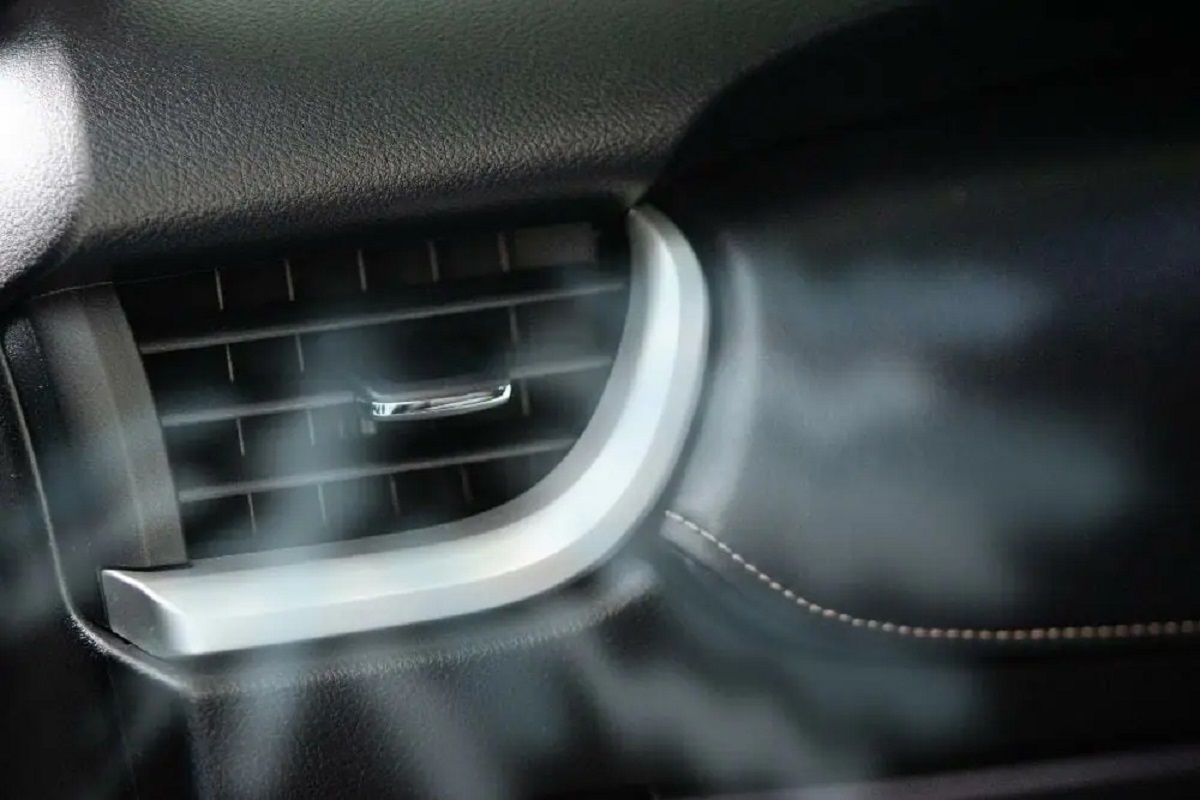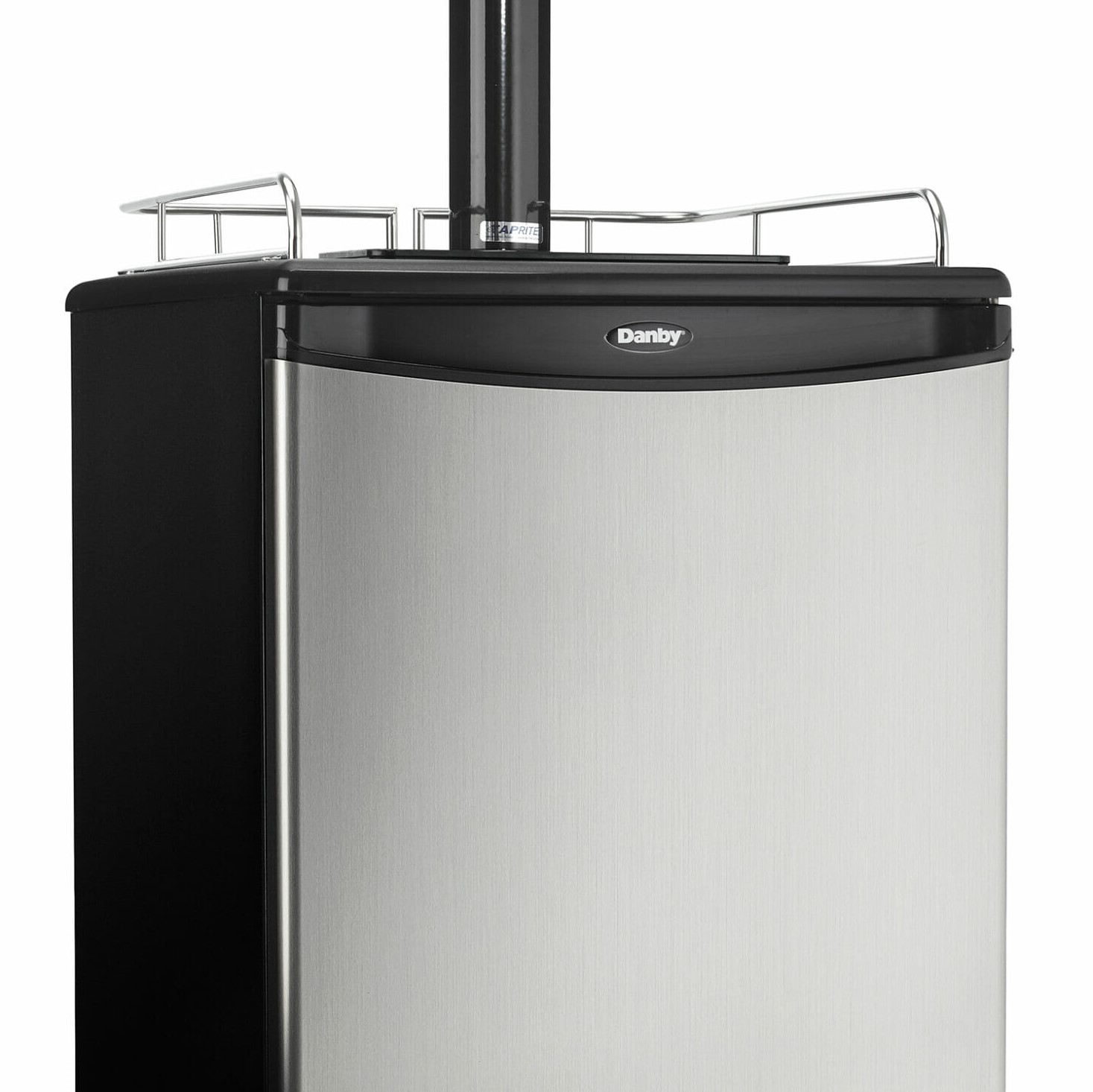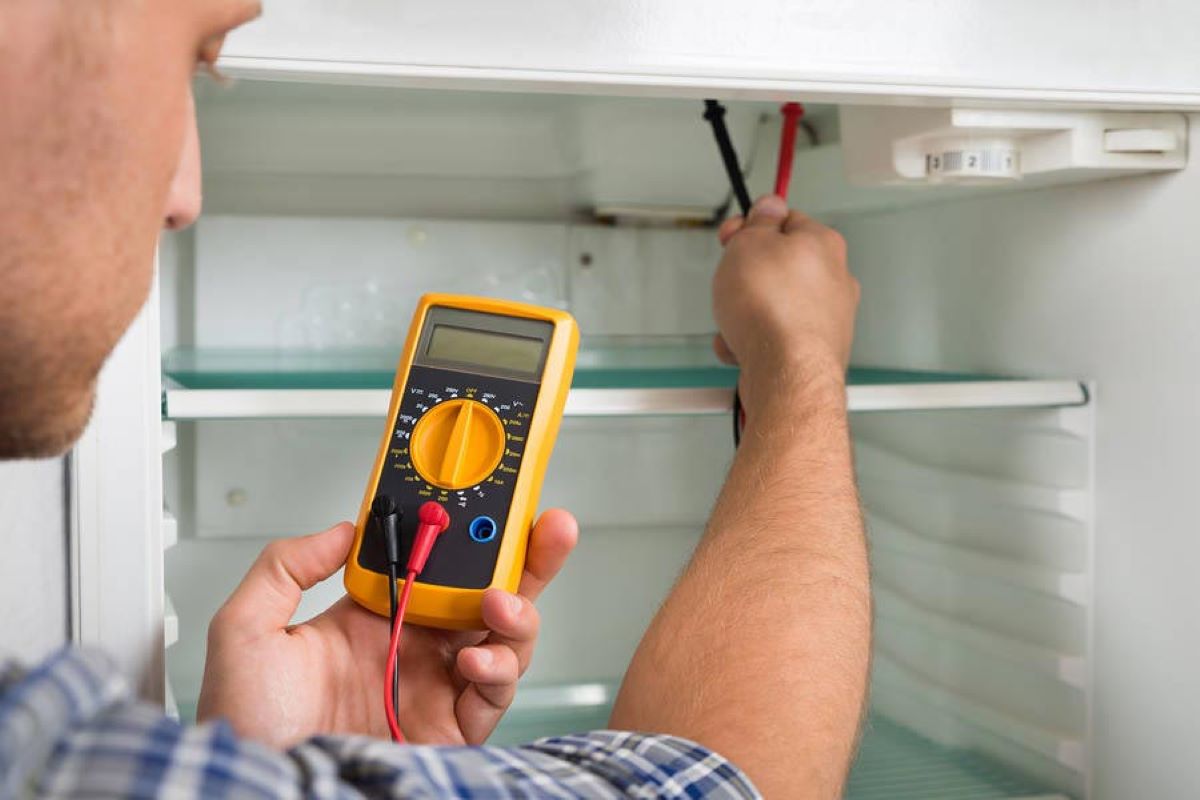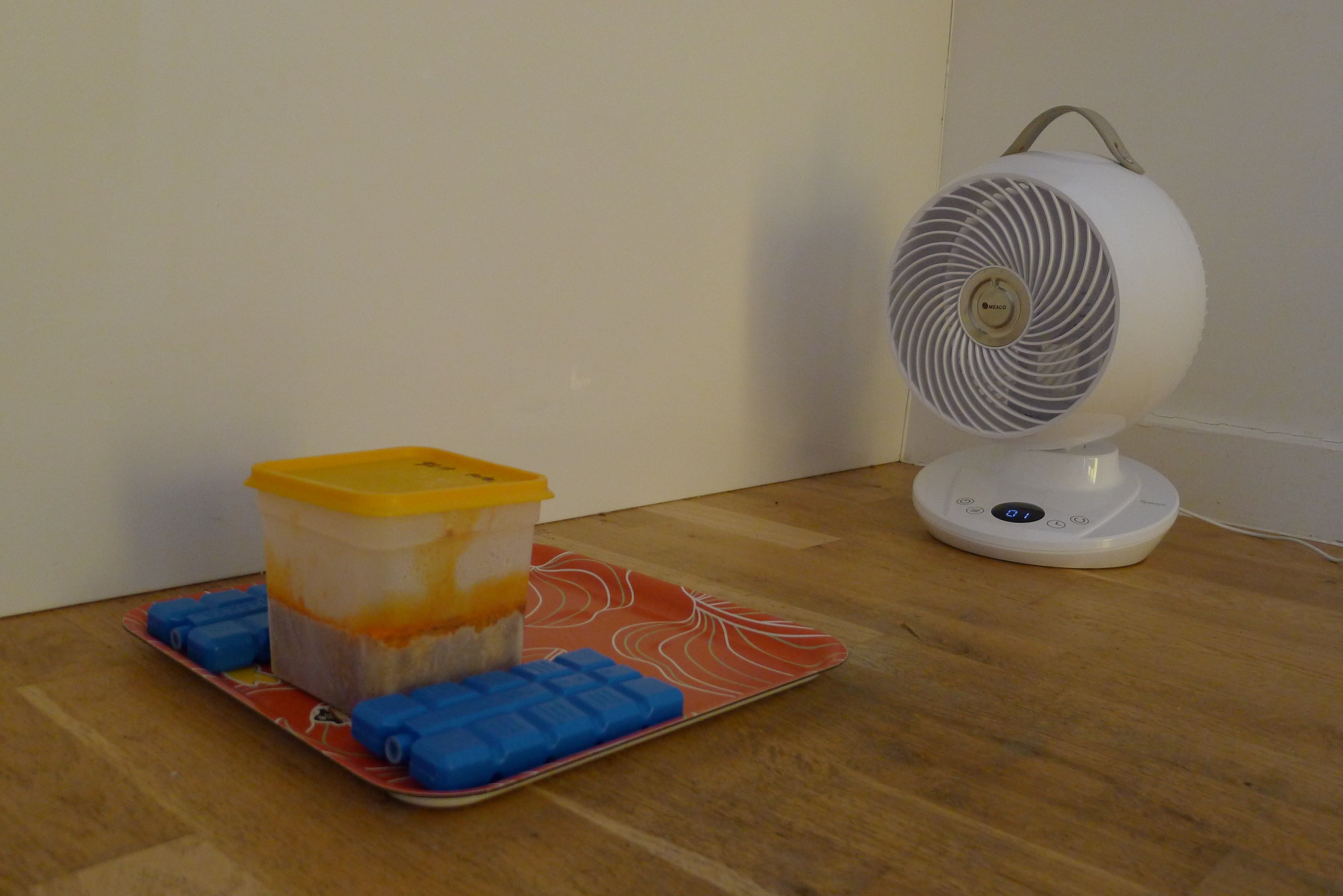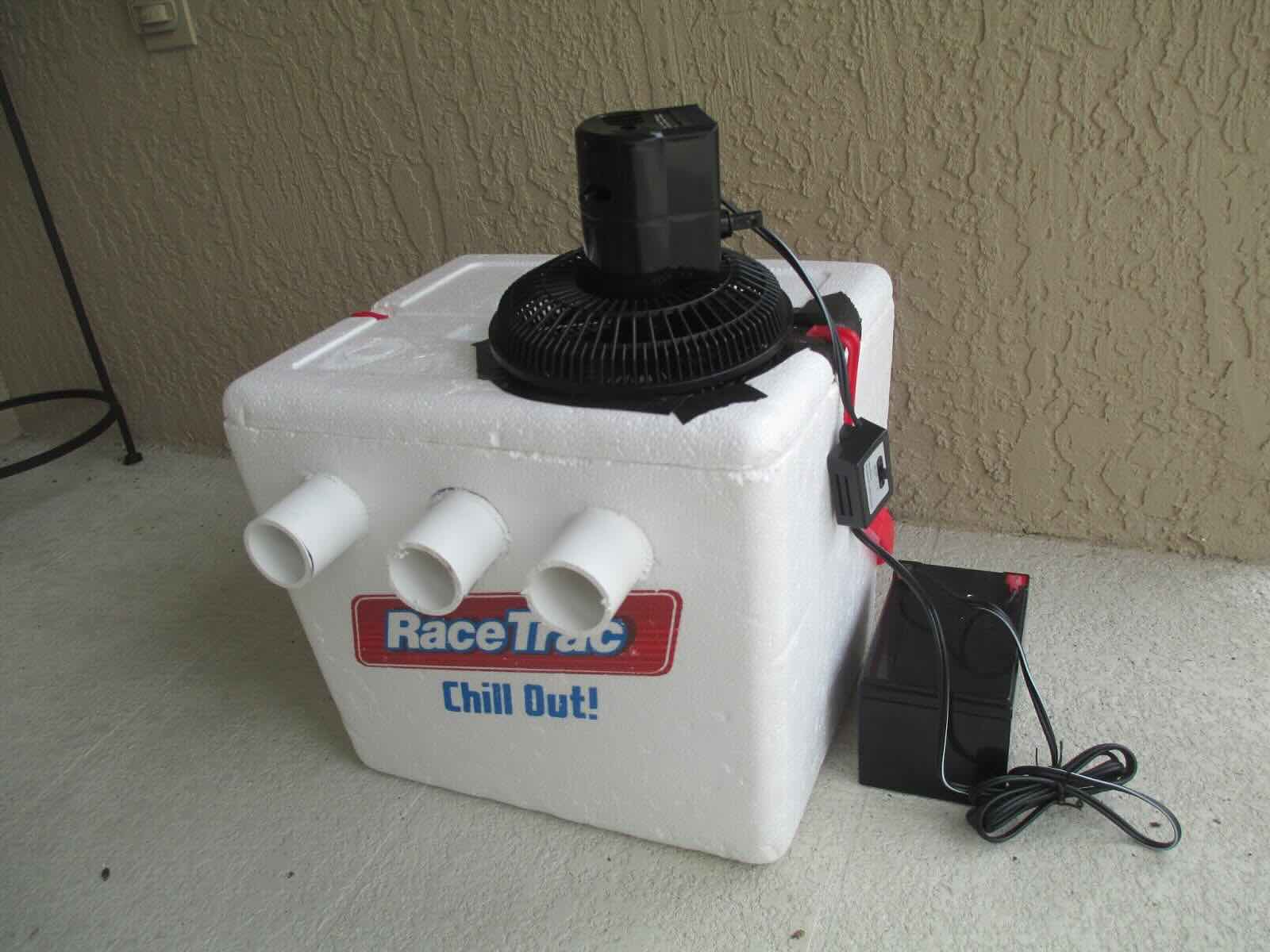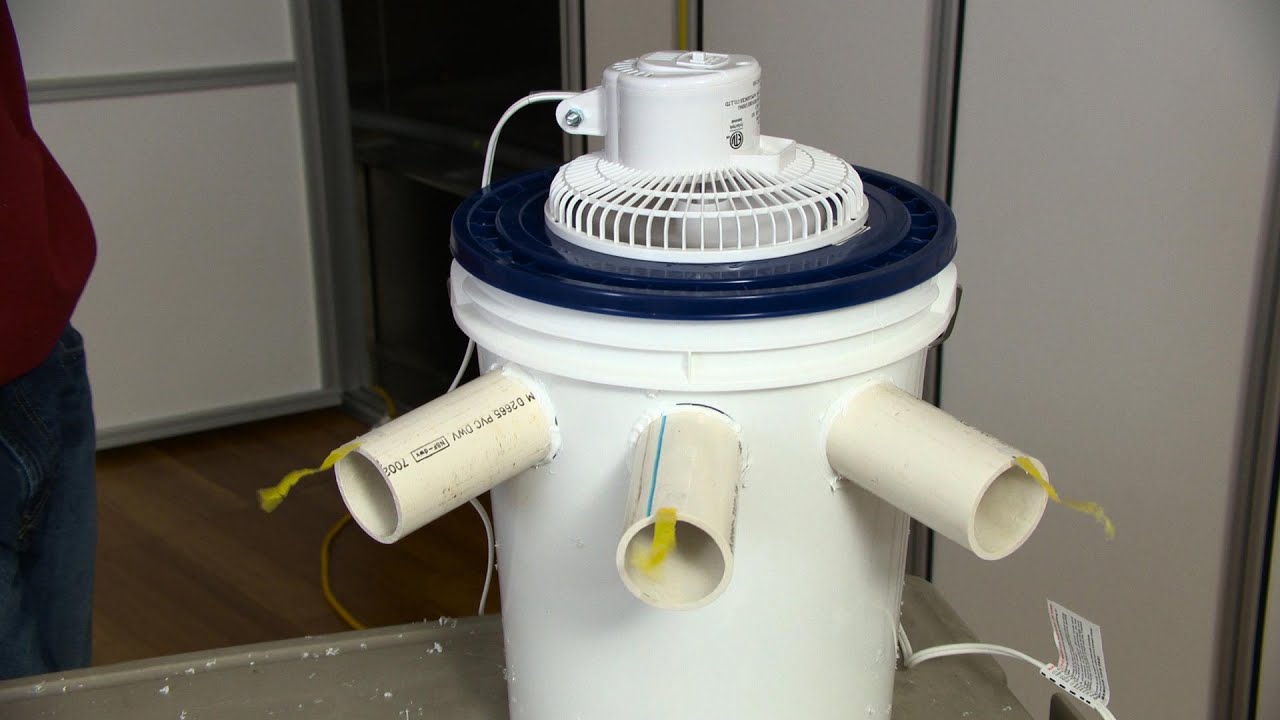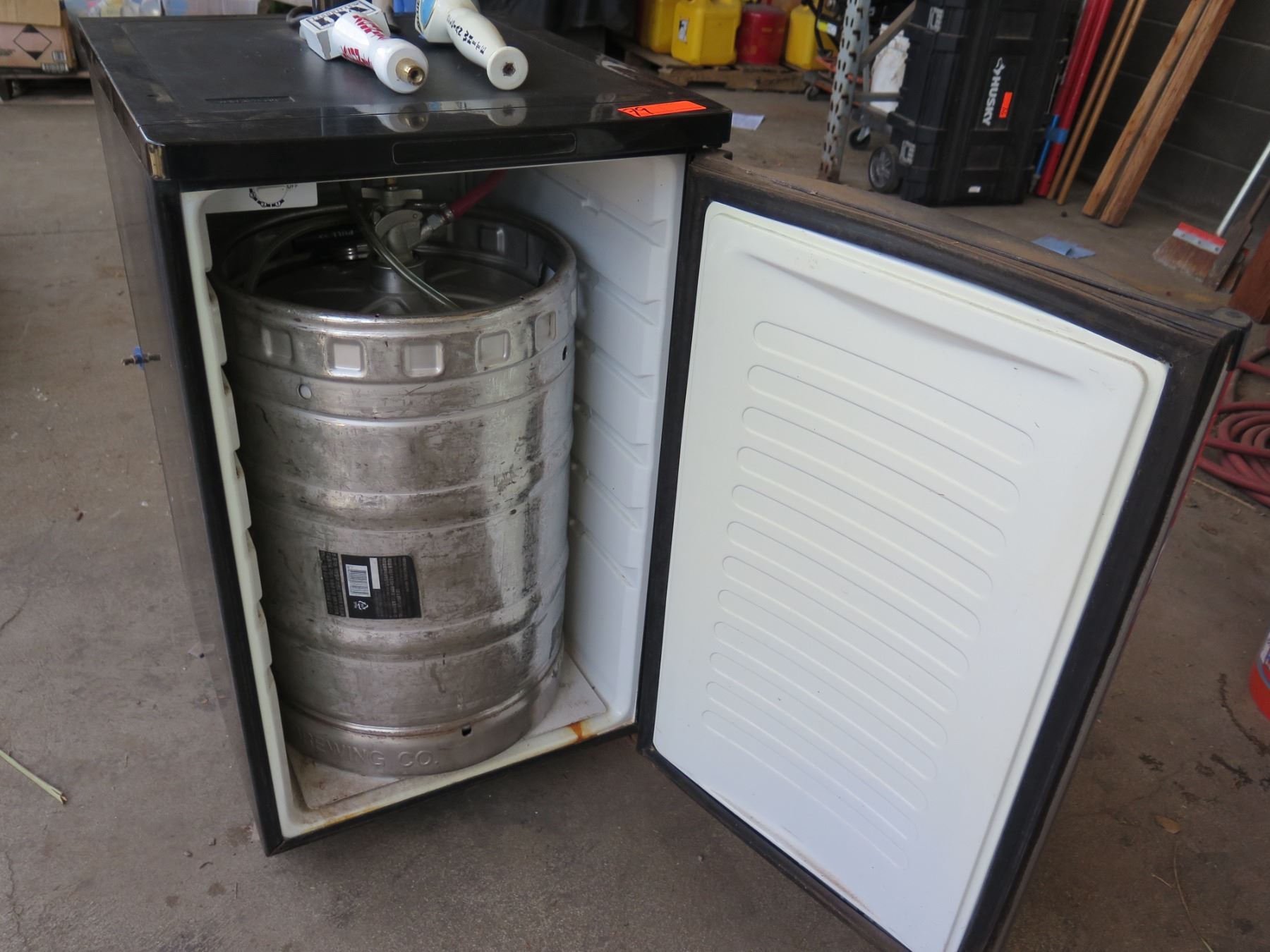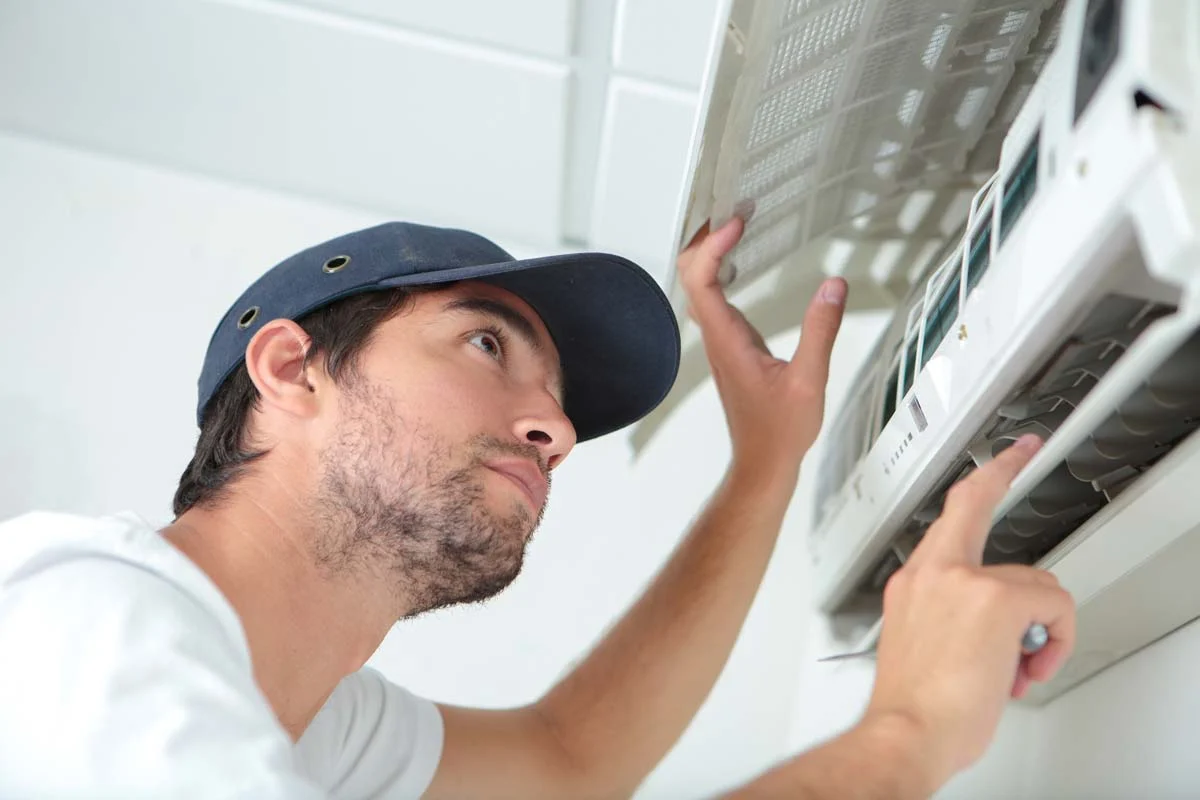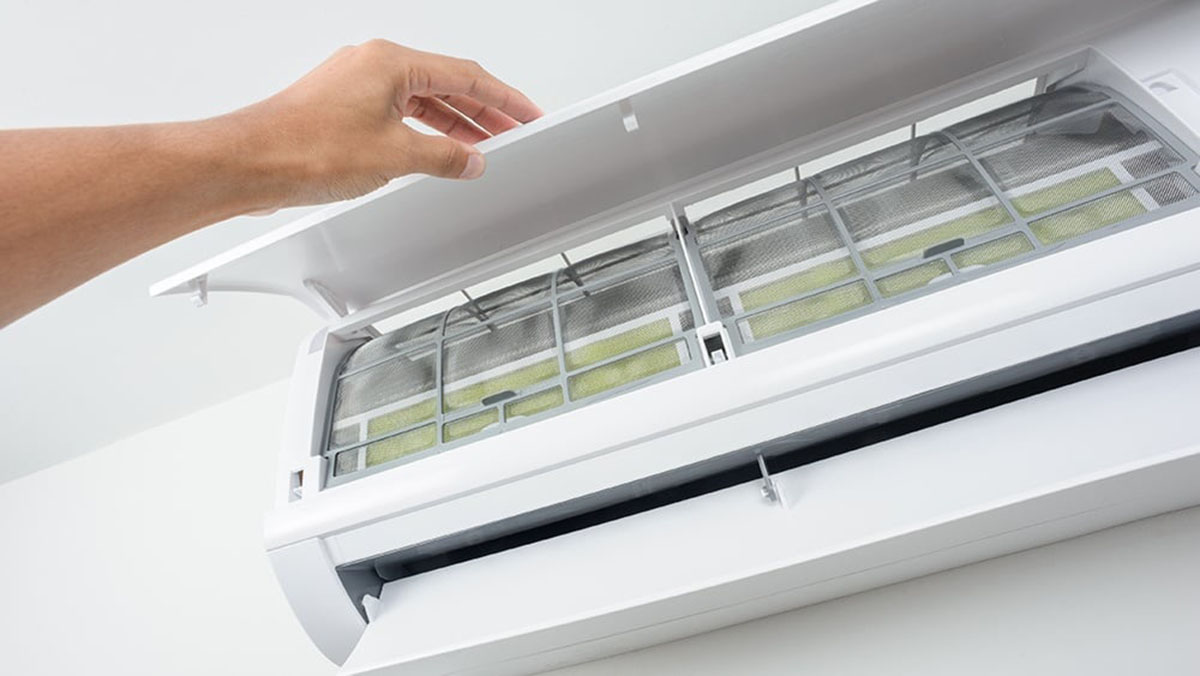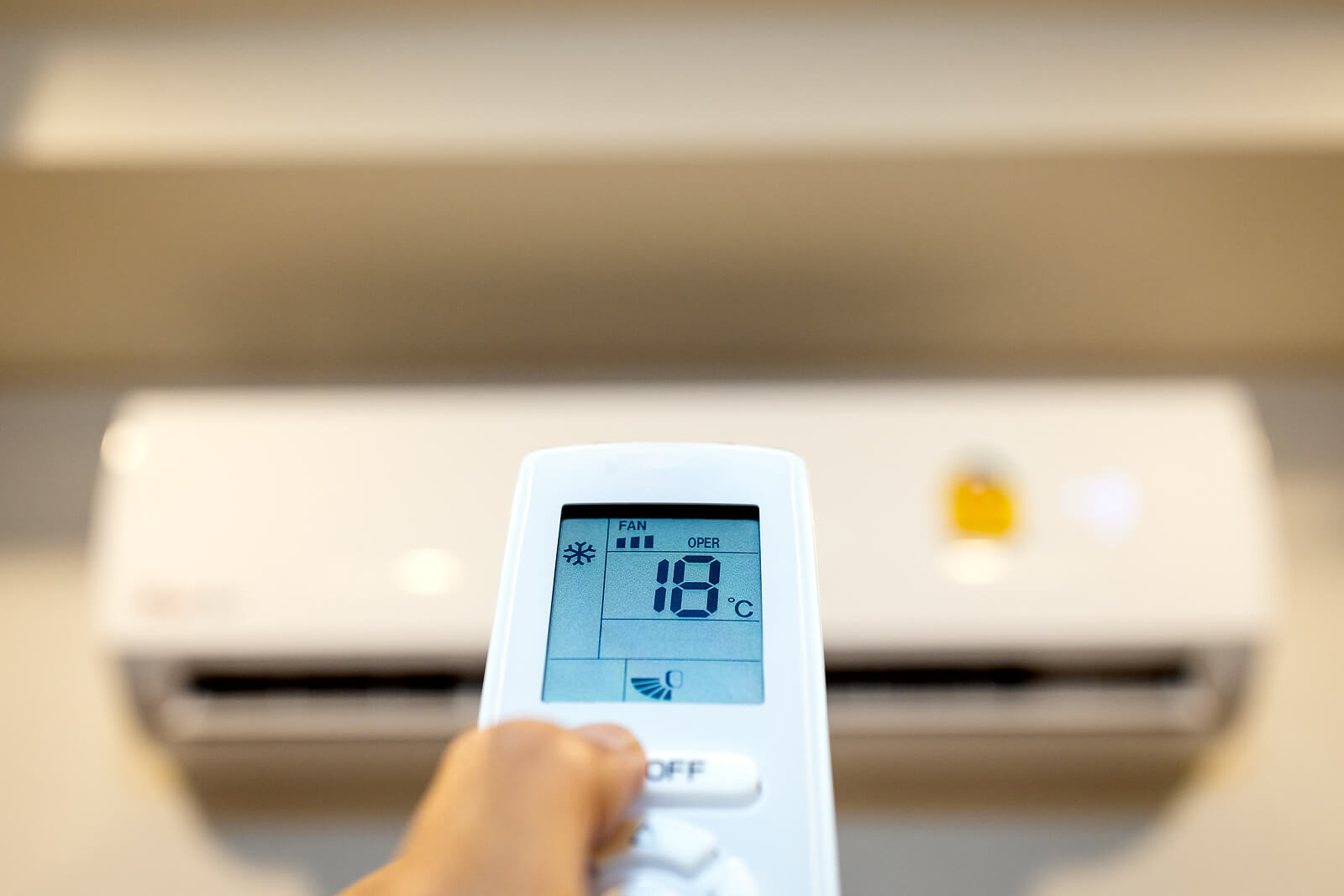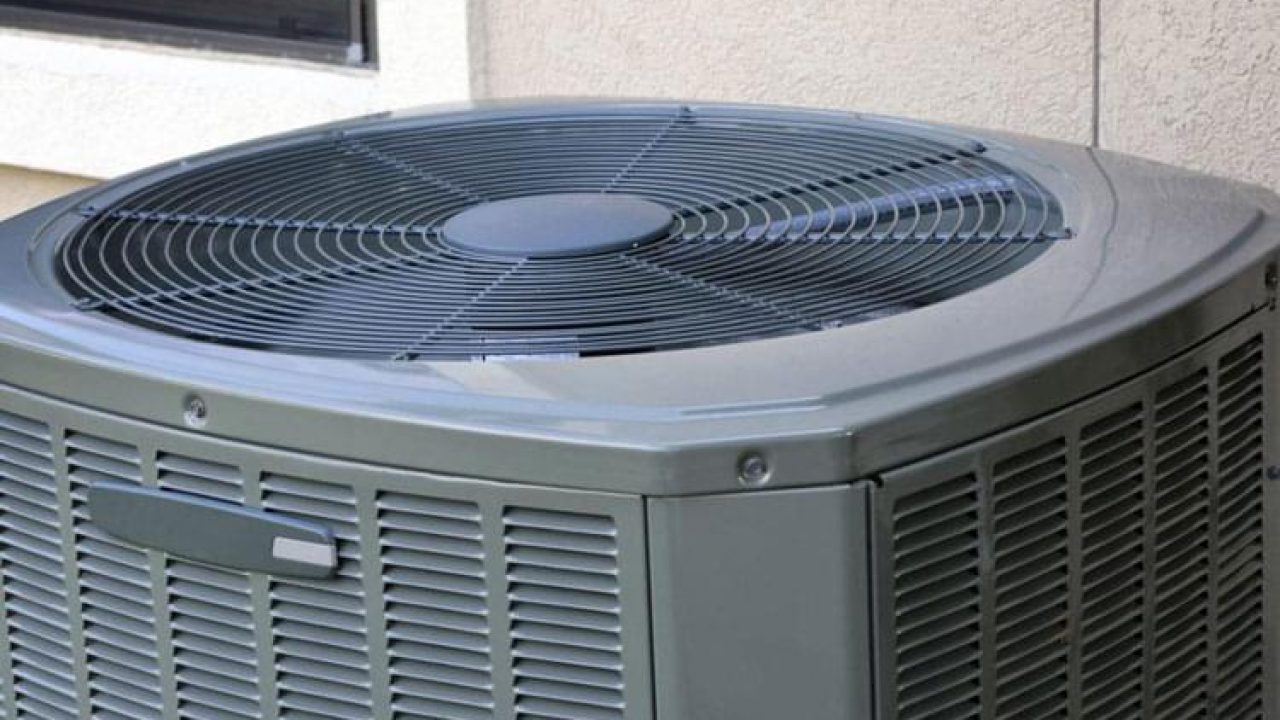Home>Home Maintenance>How To Make My Air Conditioner Colder
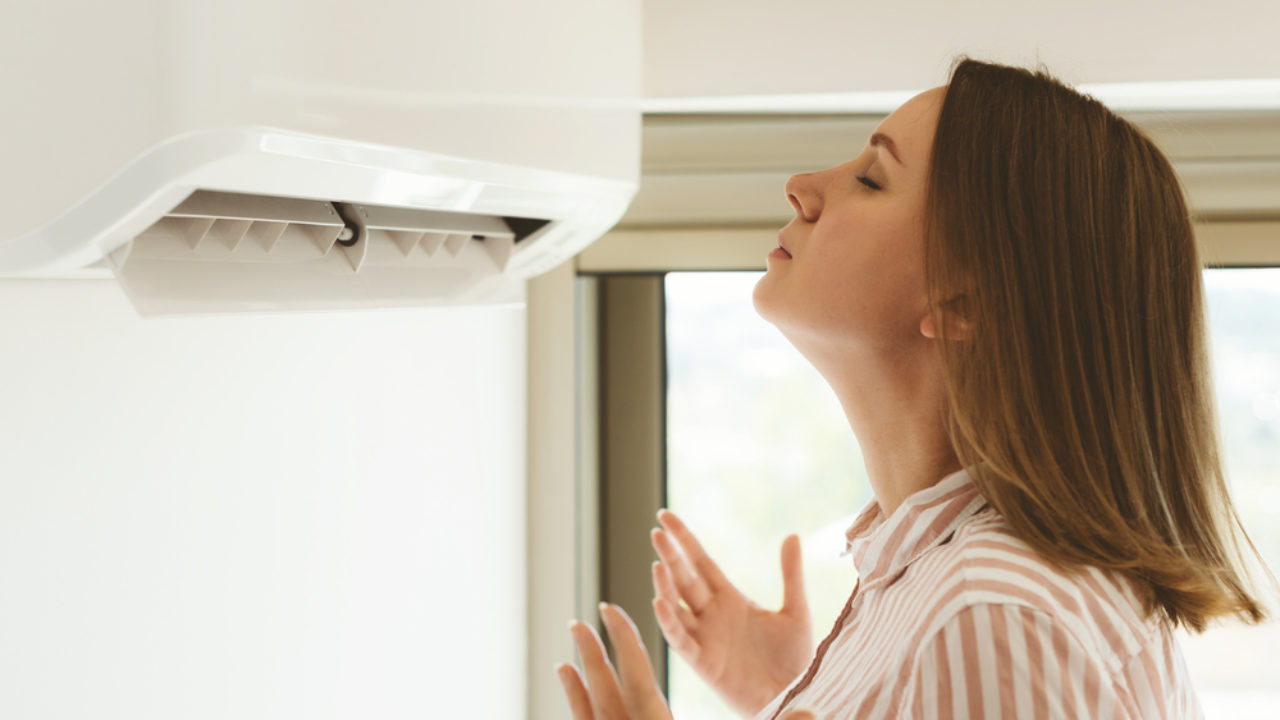

Home Maintenance
How To Make My Air Conditioner Colder
Modified: March 7, 2024
Learn the top home maintenance tips to make your air conditioner colder and improve your comfort. Stay cool all summer with these easy DIY techniques.
(Many of the links in this article redirect to a specific reviewed product. Your purchase of these products through affiliate links helps to generate commission for Storables.com, at no extra cost. Learn more)
Introduction
Welcome to our guide on how to make your air conditioner colder. As the summer heat intensifies, it’s important to ensure that your air conditioner is running at its optimal level, providing you with a cool and comfortable living space.
Throughout this article, we will explore various tips and techniques to help you maximize the cooling efficiency of your air conditioner. From basic cleaning and maintenance to adjusting settings and improving airflow, we will provide you with the knowledge and tools to make your air conditioner colder and more effective.
Before we delve into the specifics, it’s important to understand how your air conditioner works. An air conditioner consists of two main components – an indoor unit, which includes the evaporator coil and fan, and an outdoor unit, which houses the condenser coil and compressor.
The air conditioning process involves the refrigerant circulating between these two units, absorbing heat from the indoor air and expelling it outside. By manipulating the refrigerant’s pressure and temperature, the air conditioner helps cool the air in your home.
Now that we have a basic understanding of how air conditioners work, let’s dive into the steps you can take to make your air conditioner colder and enhance its performance. Following these tips will not only help maintain a comfortable indoor environment but also potentially reduce energy consumption and lower your utility bills.
Key Takeaways:
- Regular cleaning and maintenance, adjusting thermostat settings, and sealing air leaks can make your air conditioner colder and more efficient, saving energy and keeping you cool during hot summer months.
- Using fans strategically, adding insulation, and consulting with a professional HVAC technician can enhance your air conditioner’s performance, ensuring a comfortable and energy-efficient home environment.
Read more: How To Make My Car Air Conditioner Colder
Understanding Your Air Conditioner
Before making any adjustments to your air conditioner, it’s important to have a clear understanding of its components and functioning. This knowledge will help you troubleshoot and identify potential issues that may be affecting its cooling efficiency.
The first component of your air conditioner is the evaporator coil. This coil is responsible for cooling the air that is blown into your home. It works by absorbing heat from the indoor air as the refrigerant circulates through it.
Next, we have the condenser coil, which is located in the outdoor unit of your air conditioner. This coil releases the heat absorbed from the indoor air into the environment. Ensuring that both coils are clean and free from dust and debris is crucial for optimal cooling performance.
In addition to the coils, your air conditioner also includes a fan that helps circulate the cooled air throughout your home. It’s essential to ensure that this fan is functioning properly, as a malfunctioning fan can hinder the airflow and cooling capacity of your air conditioner.
The compressor plays a vital role in the air conditioning process. It pressurizes the refrigerant, increasing its temperature and allowing it to absorb heat from the indoor air. A faulty compressor can significantly impact the cooling efficiency of your air conditioner, so it’s important to keep an eye out for any potential issues.
Lastly, your air conditioner is controlled by a thermostat, which allows you to set the desired temperature in your home. Maintaining an accurate and calibrated thermostat is essential for consistent and effective cooling. Consider investing in a programmable thermostat to optimize temperature control and energy savings.
By understanding these crucial components of your air conditioner, you will be better equipped to diagnose and address any issues that may be affecting its cooling performance. In the following sections, we will explore how to clean and maintain your air conditioner, ensure proper airflow, and adjust thermostat settings, all of which can contribute to making your air conditioner colder.
Cleaning and Maintenance
Regular cleaning and maintenance are essential for keeping your air conditioner in top-notch condition and maximizing its cooling efficiency. Here are some key steps to follow:
- Clean the air conditioner filters: The filters in your air conditioner help trap dust, pollen, and other particles from the air. Over time, these filters can become clogged, restricting airflow and reducing cooling performance. Clean or replace the filters as recommended by the manufacturer.
- Clear debris from the outdoor unit: The outdoor unit of your air conditioner can accumulate leaves, grass, dirt, and other debris, which can obstruct airflow and hamper its efficiency. Regularly remove any debris from the unit, ensuring it has ample space for ventilation.
- Inspect and clean the evaporator and condenser coils: Over time, the coils in your air conditioner can collect dirt and dust, hindering their ability to transfer heat. Inspect the coils and clean them using a soft brush or vacuum cleaner. For heavily soiled coils, consider professional cleaning.
- Clean the condensate drain: The condensate drain of your air conditioner allows moisture to escape. However, it can also accumulate dirt and become clogged, potentially causing water leaks. Clear the drain line using a bleach solution or a pipe cleaner to prevent blockage.
- Check the fan blades: The fan blades in your air conditioner can accumulate dust and dirt, which can affect their performance. Inspect the blades and clean them gently using a damp cloth or brush to maintain proper airflow.
- Inspect electrical connections: Faulty electrical connections can lead to disruptions in the functioning of your air conditioner. Ensure that all electrical connections are secure and free from any damage or corrosion. If you notice any issues, consult a professional technician.
By regularly cleaning and maintaining your air conditioner, you can prevent potential issues, optimize its cooling efficiency, and extend its lifespan. Additionally, consider scheduling annual professional maintenance to thoroughly inspect and service your air conditioning system.
Checking for Air Leaks
Air leaks in your home can contribute to a decrease in cooling efficiency as conditioned air escapes and warm air infiltrates. By identifying and sealing these leaks, you can make a significant difference in the cooling performance of your air conditioner. Here’s how to check for air leaks:
- Inspect doors and windows: Check for any gaps or cracks around doors and windows. Use weatherstripping and caulking to seal these gaps and prevent air leakage.
- Examine ductwork: Inspect the ductwork in your home for any visible leaks or disconnected sections. Seal these leaks using foil tape or mastic sealant to ensure that cool air is properly delivered to each room.
- Assess electrical outlets and switches: Electrical outlets and switches on exterior walls can be sources of air leaks. Install foam gaskets behind outlet and switch plates to reduce air leakage.
- Check attic access points: Attic access points, such as pull-down stairs or hatches, can be areas of air leakage. Weatherstrip or insulate these access points to minimize air infiltration.
- Inspect plumbing penetrations: Where pipes and plumbing fixtures penetrate exterior walls, there is a potential for air leaks. Seal any gaps around these penetrations with caulking or expanding foam.
- Consider window treatments: Use blinds, curtains, or shades to block out sunlight and reduce heat gain. This can help reduce the workload on your air conditioner.
- Use door draft stoppers: Place draft stoppers or door sweeps at the bottom of exterior doors to prevent air leakage and maintain a cooler indoor environment.
- Conduct a blower door test: For a more comprehensive assessment, consider hiring a professional to perform a blower door test. This test uses a specialized fan to depressurize your home and identify specific areas of air leakage.
By checking for and sealing air leaks in your home, you can create a more energy-efficient environment, reduce the workload of your air conditioner, and ensure that cool air remains where it belongs – inside your home.
Adjusting the Thermostat
Your thermostat plays a crucial role in maintaining the desired temperature and optimizing the cooling efficiency of your air conditioner. Here are some tips for effectively adjusting the thermostat:
- Set the temperature wisely: Set your thermostat to the highest comfortable temperature during the summer months. This not only helps save energy but also prevents your air conditioner from working harder than necessary.
- Utilize programmable thermostats: Programmable thermostats allow you to set specific temperatures for different times of the day. Take advantage of this feature by programming higher temperatures when you are away from home and lower temperatures for when you are home and need cooling.
- Consider a smart thermostat: Smart thermostats offer advanced features, such as learning your preferences and adjusting the temperature automatically. They can also be controlled remotely through a smartphone app, giving you greater flexibility and control over your cooling settings.
- Take advantage of fan settings: Many thermostats have a “fan” setting that allows you to control the fan independently of the cooling system. Using the fan can help circulate cool air throughout your home and make it feel more comfortable without running the compressor.
- Avoid drastic temperature changes: Rather than setting the thermostat to a very low temperature in an attempt to cool the room faster, set it to a moderate temperature and allow your air conditioner to gradually cool the space. Rapid temperature changes can put unnecessary strain on your cooling system.
- Regularly calibrate your thermostat: Over time, thermostat sensors and readings can become inaccurate. Periodically calibrate your thermostat to ensure that the temperature readings are precise, enabling effective cooling control.
By properly adjusting and utilizing your thermostat, you can create an ideal indoor environment while optimizing energy usage and ensuring the optimal performance of your air conditioner. Take advantage of the various features and settings available to maximize your comfort and energy savings.
Read more: How To Make My Kegerator Colder
Changing the Air Filter
One of the simplest yet most important maintenance tasks for your air conditioner is changing the air filter. A dirty or clogged air filter can restrict airflow, reduce cooling efficiency, and even contribute to system malfunctions. Here’s how to properly change the air filter:
- Locate the air filter: The air filter is typically located in the return air duct or in the air handler unit of your air conditioner. Refer to your owner’s manual if you’re unsure of its exact location.
- Turn off the air conditioner: Before replacing the air filter, it’s essential to turn off the air conditioner to prevent the system from sucking in dust and debris while the filter is removed.
- Remove the old filter: Carefully remove the existing air filter from its housing. Take note of its size and type to ensure you purchase the correct replacement.
- Inspect the filter: Examine the old filter for any visible dirt, dust, or debris. If the filter appears dirty or clogged, it’s an indicator that it needs to be replaced.
- Choose the right replacement filter: There are various types of air filters available, including fiberglass, pleated, and high-efficiency options. Choose a filter that is compatible with your air conditioner and matches your specific filtration needs. Higher-rated filters can provide better air purification but may require more frequent replacement.
- Install the new filter: Insert the new filter into the filter housing, making sure it is positioned correctly. Follow the arrows on the filter frame that indicate the airflow direction. Ensure that the filter is securely in place.
- Turn on the air conditioner: Once the new filter is installed, you can safely turn on the air conditioner and resume normal operation.
- Establish a regular replacement schedule: Air filters should be replaced according to the manufacturer’s recommendations, which is typically every one to three months. However, factors such as pets, allergies, and air quality may require more frequent filter changes. Make a note on your calendar or set a reminder to ensure regular filter replacements.
By regularly changing the air filter, you can maintain proper airflow, improve indoor air quality, prolong the lifespan of your air conditioner, and optimize cooling efficiency. It’s a simple and cost-effective maintenance task that can have a significant impact on your comfort and air conditioning system’s performance.
Clean or replace the air filter regularly to ensure proper airflow and maximum cooling efficiency. A dirty filter can restrict airflow and reduce the cooling capacity of your air conditioner.
Enhancing Airflow
Proper airflow is crucial for the effective cooling of your air conditioner. When airflow is restricted, it can lead to poor cooling performance, increased energy consumption, and potential damage to the system. Here are some tips to enhance and promote airflow:
- Clear obstructions around vents: Ensure that vents are not blocked by furniture, curtains, or other objects. Blocked vents can restrict airflow and prevent cool air from circulating properly throughout your home.
- Keep registers and vents clean: Dust and debris can accumulate on registers and vents, hindering airflow. Regularly clean these openings to ensure that air can pass through unimpeded.
- Open interior doors: To facilitate proper airflow, keep interior doors open, allowing air to flow freely from room to room. This helps maintain a consistent and balanced cooling throughout your living space.
- Check for blocked return air vents: The return air vents are responsible for pulling air into your air conditioner for cooling. Make sure these vents are unobstructed by furniture or other objects that may interfere with the airflow.
- Consider adding vents: In some cases, certain rooms may have insufficient air circulation. Consider adding additional vents or ducts to improve airflow and ensure consistent cooling throughout your home.
- Inspect ductwork for leaks: Leaking ducts can disrupt the airflow and lead to energy loss. Inspect your ductwork for any visible leaks or disconnected sections. Seal these leaks using foil tape or mastic sealant to maintain proper airflow.
- Ensure proper insulation: Good insulation helps maintain the temperature of the conditioned air as it travels through the ductwork. Make sure your ducts are properly insulated to prevent heat gain or loss during transit.
- Keep outdoor unit clear: Ensure that the outdoor unit of your air conditioner has ample space and is free from obstructions. Clear away any debris, vegetation, or debris from the immediate vicinity to allow for proper airflow.
- Consider using a circulating fan: Place a portable or ceiling fan near the air conditioner’s air vents to help distribute cool air more effectively throughout your home.
By implementing these measures, you can enhance airflow, improve cooling efficiency, and ensure that your air conditioner operates at its optimal level. Proper airflow is key to maintaining a comfortable and consistently cool indoor environment.
Using Curtains or Blinds
Curtains or blinds not only add to the aesthetics of your home but can also play a significant role in improving the cooling efficiency of your air conditioner. By strategically using curtains or blinds, you can block out heat from the sun and maintain a cooler indoor environment. Here are some tips on how to use curtains or blinds effectively:
- Invest in blackout curtains or blinds: Blackout curtains or blinds are specifically designed to block out sunlight and prevent heat gain. These window coverings have an insulating layer that helps keep your home cool by reducing the amount of heat that enters through the windows.
- Closing curtains during the day: As the sun shines directly through windows, it can raise the temperature inside your home. By closing the curtains or blinds during the hottest parts of the day, you can prevent heat from entering and keep your home cooler.
- Open curtains at night: Once the sun sets and the outside temperature cools down, consider opening your curtains to allow for natural ventilation. This can help cool your home, especially if there is a breeze.
- Use light-colored curtains or blinds: Light-colored curtains or blinds reflect sunlight and heat rather than absorbing it. Opt for curtains or blinds in light hues to minimize heat transfer and keep your rooms cooler.
- Install window film: Window film is a thin, adhesive film that can be applied to your windows to block out UV rays and reduce heat gain. It is a cost-effective option for improving the energy efficiency of your windows and reducing the workload of your air conditioner.
- Consider insulated window coverings: Insulated curtains or blinds have multiple layers of fabric or special insulation material that helps block heat and provide additional insulation for your windows. These coverings can help reduce heat transfer and keep your home cooler.
By using curtains or blinds strategically, you can block out the heat from the sun, reduce heat gain, and maintain a cooler indoor environment. This allows your air conditioner to operate more efficiently and helps save on energy costs.
Utilizing Fans
Fans are a valuable asset when it comes to enhancing the cooling performance of your air conditioner. They can help circulate air, create a cool breeze, and distribute cold air more effectively throughout your home. Here are some tips on how to utilize fans in conjunction with your air conditioner:
- Utilize ceiling fans: Ceiling fans can complement the cooling effects of your air conditioner. Set your ceiling fans to rotate counterclockwise during the summer months to create a cooling breeze. This movement helps evaporate moisture from your skin, making you feel cooler.
- Position portable fans strategically: Place portable fans near vents or in areas where you feel the airflow from your air conditioner is weak. By positioning them strategically, you can help push cool air into different rooms and improve the overall cooling effectiveness.
- Create cross-ventilation: Open windows on opposite sides of your home and position fans strategically to create a cross-ventilation effect. This allows for the flow of fresh, cool air, helping reduce reliance on your air conditioner.
- Consider tower fans or oscillating fans: Tower fans or oscillating fans can provide wider airflow coverage in a room. Place them in areas where they can circulate cool air effectively and ensure even distribution throughout the space.
- Use fans to create a wind chill effect: Fans, even without air conditioning, can create a wind chill effect, making you feel cooler. Consider using fans in rooms you spend the most time in to boost comfort and reduce the need to run your air conditioner constantly.
- Nighttime ventilation: During cooler nights, consider turning off your air conditioner and opening windows to allow for natural ventilation. Place fans strategically to draw in cool air and circulate it throughout your home while expelling hot air.
By utilizing fans strategically, you can enhance the cooling effects of your air conditioner, improve air circulation, and create a more comfortable living environment. Fans provide an energy-efficient way to stay cool and reduce the workload of your air conditioner.
Read more: How To Make My AC Colder
Considering Insulation Options
Proper insulation plays a crucial role in maintaining a cool and comfortable indoor environment and maximizing the efficiency of your air conditioner. By ensuring that your home is well-insulated, you can minimize heat transfer, reduce the workload on your cooling system, and ultimately save on energy costs. Here are some insulation options to consider:
- Attic insulation: Heat rises, and a significant amount of heat can accumulate in the attic space. Adequate insulation in the attic can prevent this heat from seeping into your living space, helping to keep it cooler. Consider adding or upgrading insulation in your attic to minimize heat gain.
- Wall insulation: Walls are a major source of heat transfer. Adding insulation to your exterior walls can reduce heat gain during hot weather and heat loss during cold weather. This helps maintain a more stable temperature inside your home and reduces the strain on your air conditioner.
- Window and door insulation: Windows and doors are notorious for allowing heat to enter or escape from your home. Consider using weatherstripping, caulk, or adding window film to make these openings more energy-efficient and reduce heat transfer.
- Duct insulation: If you have exposed ductwork, ensuring it is properly insulated can prevent energy loss due to heat gain or loss. Insulating your ducts helps maintain the temperature of the conditioned air as it travels through the system, maximizing cooling efficiency.
- Floor insulation: If you have a crawl space or an underfloor area, insulating the floors can help prevent heat transfer from the ground. This can contribute to a cooler indoor environment, particularly in areas with warmer climates.
- Reflective insulation: Reflective insulation, typically in the form of radiant barriers, reflects heat away from your home, reducing heat gain. Install radiant barriers in your attic, on the underside of your roof, or in other areas where direct sunlight can penetrate your home.
Consult with insulation professionals to determine the best insulation options for your specific situation and climate. Proper insulation improves energy efficiency, reduces the workload on your air conditioner, and enhances overall comfort.
Consulting with a Professional
While there are many steps you can take to make your air conditioner colder and improve its performance on your own, it’s always beneficial to consult with a professional HVAC (Heating, Ventilation, and Air Conditioning) technician. These professionals have the expertise and knowledge to assess your air conditioning system and provide tailored recommendations. Here’s why consulting with a professional is valuable:
- Expert advice: HVAC technicians are trained professionals who specialize in air conditioning systems. They can assess your specific cooling needs, evaluate the condition of your system, and provide expert advice on how to optimize its performance.
- System inspection and maintenance: A professional technician can conduct a thorough inspection of your air conditioning system, identifying any potential issues that may be affecting its cooling efficiency. They can also perform essential maintenance tasks, such as cleaning coils, lubricating moving parts, and checking refrigerant levels.
- Correct diagnosis of problems: If you’re experiencing issues with your air conditioner, a professional can accurately diagnose the problem and provide the necessary repairs. Attempting to fix complex issues on your own may lead to further damage or ineffective solutions.
- Energy-saving recommendations: HVAC technicians can provide energy-saving recommendations specific to your air conditioning system. They can suggest thermostat settings, airflow improvements, and other strategies to help you save on energy costs without compromising comfort.
- Professional installation and upgrades: If you need to install a new air conditioner or upgrade your existing system, a professional technician can guide you through the process. They can recommend the right size and type of unit for your home, ensuring proper installation and optimal performance.
- Warranty protection: Many air conditioning systems come with warranties that require professional installation and maintenance. By consulting with a professional, you can ensure that you comply with warranty terms and maintain coverage for any potential repairs or replacements.
When selecting an HVAC technician, look for certified and licensed professionals with a good reputation in your area. Don’t hesitate to ask for references or seek recommendations from friends, family, or neighbors. A professional consultation can provide you with peace of mind, improve the efficiency of your air conditioner, and potentially prolong its lifespan.
Conclusion
Making your air conditioner colder and more efficient is not only beneficial for your comfort but also for your energy consumption and utility bills. By following the tips and techniques provided in this guide, you can optimize the cooling performance of your air conditioner and create a cool and comfortable living space during the hot summer months.
Understanding how your air conditioner works and its various components is the first step in troubleshooting and ensuring its optimal functioning. Regular cleaning and maintenance, such as changing the air filter and inspecting the coils, will help prevent issues and maximize cooling efficiency.
Checking for air leaks, adjusting the thermostat, utilizing fans, and using curtains or blinds strategically can all contribute to a cooler indoor environment. Proper insulation, both in the form of attic insulation, wall insulation, and duct insulation, helps minimize heat transfer and maintain a consistent temperature throughout your home.
While these steps can be implemented on your own, consulting with a professional HVAC technician is highly recommended. They can provide expert advice, conduct thorough inspections, and perform necessary maintenance or repairs to ensure your air conditioner is in top-notch condition.
By implementing these tips and consulting with professionals when necessary, you can make your air conditioner colder, improve energy efficiency, and ultimately enjoy a cooler and more comfortable home environment. Stay cool and beat the summer heat!
Frequently Asked Questions about How To Make My Air Conditioner Colder
Was this page helpful?
At Storables.com, we guarantee accurate and reliable information. Our content, validated by Expert Board Contributors, is crafted following stringent Editorial Policies. We're committed to providing you with well-researched, expert-backed insights for all your informational needs.
